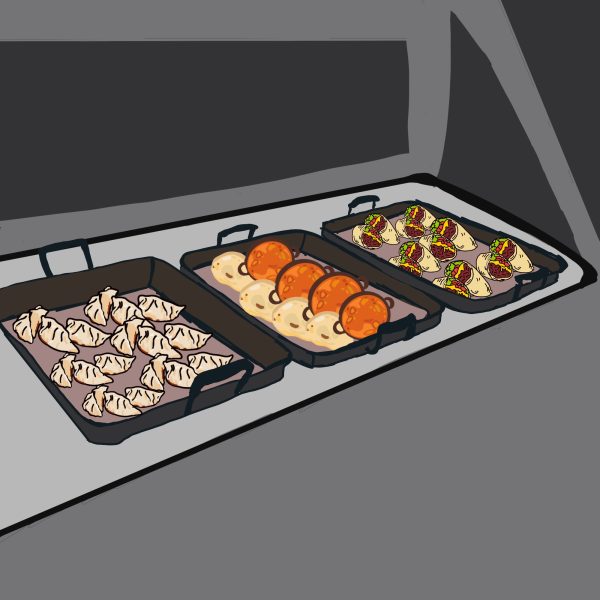Business as Usual: Grubhub Fails to Deliver
Times have recently become much tougher for an already struggling Grubhub. On Monday, October 28, the well-known food delivery service company that serves roughly 20 million active users across the United States was in for a rude awakening after reporting dismal earnings figures, signaling an even greater slowdown in long-term potential.
After reporting earnings this past Monday, investors fled for the exits on Grubhub (NYSE: GRUB) in large quantities. As of November 1, 2019, GRUB is down 42.5 percent from the price quoted just prior to the company releasing earnings figures. For Quarter Three 2019, Grubhub posted revenue of 322 million dollars, a 30 percent increase from one year ago, but below analyst expectations of 330.5 million dollars.
On a non-GAAP basis, GRUB reported net income of 24.7 million dollars, or 0.27 dollars per share. This figure represents a 41 percent decline on a quarterly basis. Additionally, EBITDA figures (Earnings Before Interest, Taxation, Depreciation and Amortization), which represent a company’s operating performance, dropped 10 percent from Quarter Two 2019. Though the earnings data indicated a difficult situation, what worried investors most was Grubhub’s painful outlook for future business prospects.
Looking ahead to Quarter Four 2019, GRUB forecasts revenue figures within a range of 315 – 335 million dollars, well below the Wall Street consensus of 387.3 million dollars. In other words, even if the company were to perform on the ambitious end of their own projections, such revenue data would still be 13.5 percent below initial levels. Since the general public views analyst projections with much weight, this sets up a double-edged sword scenario for Grubhub.
In other words, Grubhub can perform well by their own measure, but everyday investors care far more about how the company performs in relation to analyst expectations. And since even strong figures will most likely still fall below Wall Street estimates, Grubhub is in a very difficult situation. Returning to EBITDA, Grubhub is anticipating a value between 15 – 25 million dollars for the next fiscal quarter. To put that projection into perspective, GRUB reported an EBITDA figure of 53.8 million dollars for the most recent quarter. As you can see, even if the company were to perform on the higher end of the scale, Quarter Four 2019 would still show a more than 50 percent decline from the third quarter.
Naturally, the question posed should be “what caused such atrocious financial figures from Grubhub?” The answer is quite simple: competition.
I mentioned this concept when critiquing Beyond Meat, whose stock price has fallen 45 percent since I crafted the article, but who’s keeping track? The nature of efficient economies is such that when firms capture an untapped sector of the market, it is crucial to establish a firm competitive advantage, and quickly. Otherwise, competitors emerge, offering the same good or service at a cheaper price, thus undercutting the original firm by acquiring market share. For Beyond Meat, competitors include Impossible Foods, Tyson Foods, Kellogg and Nestle. Notice how even traditional brand name like Tyson and Kellogg entered the vegan meat industry.
Unlike Kraft-Heinz, these conventional brand names adapted to changing consumer sentiment and altered their business models. As a result, they were able to absorb a greater share of the plant-based meat market, and Beyond Meat is feeling the aftershocks of this adaptation, as the company must continue to offer steep discounts in order to keep up with rival firms. And even with those heavy discounts cutting massively into Beyond Meat’s bottom line, they’re still struggling to keep up with competitors even in terms of raw market share as diverse and more innovative options continue to pop up in the industry for forward-thinking consumers.
Grubhub is faced with the same problem. Since its founding in 2004, Grubhub was the first real player in the on-demand food delivery service. After experiencing exceptional growth, the company decided to go public by listing itself on the New York Stock Exchange in 2014 at 26 dollars per share. Four years later, GRUB was trading near 150 dollars per share. But, competition quickly emerged with the arrival of firms such as Doordash, Uber Eats and Postmates. Fortune published an article in March 2019 covering how Doordash had actually unseated Grubhub as the leader in food delivery race.
Included in the article was a graph depicting the change in the share of total consumer spending for the on-demand food delivery service. The results were staggering. In March 2018, Grubhub was in the lead with about 38 percent of the market share. Doordash trailed, capturing only about 15 percent, respectively. By February 2019, Doordash had taken the lead. The firm now captured 27.6 percent of the market, ahead of both Grubhub (26.7 percent) and Uber Eats (25.2 percent).
Grubhub is in very real danger. Figures from October 2019 show Grubhub maintaining stagnant rates of growth pertaining to share of total revenues in the sector. Meanwhile, the firm’s competitors have continued to extend their lead over Grubhub by growing at a far quicker pace. And according to The Motley Fool, “Grubhub’s growth in daily average grubs decelerated significantly during the third quarter, and will likely drop to the single digits over the next few quarters.”
If Grubhub does not act quick to change business operations in order to stimulate user growth and expand profit margins, the end could be even closer than originally anticipate, and Grubhub’s once-monopoly on the food delivery network will be nothing more than a passing memory – and a poor investment.
Richard Falvo is a junior from New Hartford, NY pursuing a double concentrating in economics and philosophy. After joining The Maroon-News in Fall 2019,...














